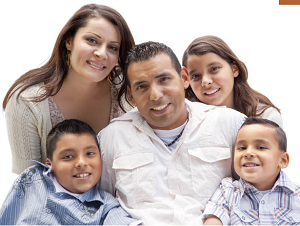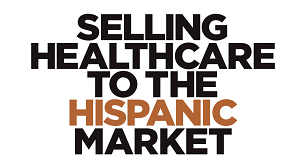Innovative Solutions Emerge to Meet Unmet Healthcare Needs of Hispanic Families
by Mario Anglada
Hispanic people represent nearly 40% of California’s population. They also have the highest uninsured rates of any racial or ethnic group within the United States, according to the U.S. Department of Health and Human Services Office of Minority Health (OMH). In fact, according to the latest figures, 19.5% of the Hispanic population were not covered by health insurance, as compared to 6.3% of the non-Hispanic white population. This is accompanied by a poor track record for early diagnosis and compliance with treatment that further exacerbates medical conditions.
This situation presents a ripe opportunity for brokers in terms of helping clients play a greater role in providing access to care that is culturally relevant and that addresses other barriers faced by Hispanic families. OMH studies reveal that for many Hispanic individuals health is often suboptimal due to factors such as cultural/language barriers, lack of access to preventive and primary care and being under- or uninsured.
The challenge to providing better access to care for Hispanic communities is to create a systematic process that is simple to navigate, while still delivering optimal healthcare. Fortunately, there is a high level of technology adoption among Hispanics, creating a streamlined way to provide access to healthcare for this ever-growing population. This is coupled with a wealth of applications designed specifically to meet Hispanic cultural and medical needs.

A Closer Look at Barriers to Care
Barriers to care come as no surprise, considering that only 7% of U.S. physicians are of Hispanic origin, and at least one-fourth of Hispanic adults in the U.S. don’t have a primary healthcare provider. This is based on research from Modern Healthcare Magazine in 2014.
The OMH found that Hispanic health disparity is shaped by cultural/language barriers, lack of access to preventive and primary care, and the lack of health insurance. Thirty-one percent of Hispanic people in the U.S. state that they are not fluent in English, while 22.6% of Hispanic people in the U.S. in comparison to 10.4% of non-Hispanic whites were living at the poverty level.
One study by PubMed.gov examined the ethnic disparity in healthcare utilization and expenditures between Hispanic and non-Hispanic people. After controlling for confounding variables, the study revealed that Hispanic people living with diabetes had:
- a higher rate of poverty
- lower level of formal education
- were less physically active
- had lower healthcare utilization/expenditures than did non-Hispanic people.
The assessment of healthcare differences among different ethnic groups is challenging because of potential bias in reporting that requires careful adjustment. This study successfully identified and controlled for confounding bias and concluded that disparity in healthcare utilization among Hispanic individuals still exists.
Diseases in Hispanic Communities
The Centers for Disease Control and Prevention (CDC) cited some of the leading causes of illness and death among Hispanic communities included diabetes, heart disease, cancer, unintentional injuries (accidents) and stroke. Other health conditions and risk factors that significantly affect Hispanic people are asthma, chronic obstructive pulmonary disease, HIV/AIDS, obesity, suicide and liver disease.
Cardiovascular Disease
Stats from YourHeartHealth.com show Hispanic Americans face higher risks of heart disease than non-Hispanic white Americans, due to higher rates of high blood pressure, obesity and diabetes.
- Among Mexican-American adults, 33% of men and 31% of women have cardiovascular disease.
- Cardiovascular disease causes more deaths for Hispanic Americans than all forms of cancer combined.
- Hispanic women are significantly less aware than non-Hispanic white women that
cardiovascular disease is their leading cause of death.
Diabetes
The CDC reports that 50% of Hispanic adults in the U.S. are expected to develop type 2 diabetes, compared with 40% for non-Hispanic adults. Research by PubMed.gov shows that ethnic minorities, especially Hispanic people, have a disproportionate burden of illness associated with diabetes mellitus.
Obesity and Other Health Risks
According to Minority Health.hhs.gov. Hispanic groups have higher rates of obesity, which is a risk factor for diabetes, than non-Hispanic whites. There are also disparities among Hispanic subgroups. For instance, while the rate of low birth weight infants is lower for the total Hispanic population in comparison to non-Hispanic whites, Puerto Ricans have a low birth weight rate that is twice that of non-Hispanic whites. Also, Puerto Ricans suffer disproportionately from asthma, HIV/AIDS and infant mortality, while Mexican-Americans suffer disproportionately from diabetes.
What to Look For
Proven technology is being used to leverage decades of health industry knowledge and to speed access to care, particularly within Spanish-speaking communities.
Brokers and their clients now can easily investigate innovative technology solutions designed to provide underserved populations with affordable prescription drugs, chronic condition management programs, and telehealth/virtual medical consultations. These solutions are designed to answer the unmet healthcare needs and limited access to affordable care among Hispanic and other underserved families. These platforms need to be digitally accessible, bilingual, culturally relevant and compliant with the Health Insurance Portability and Accountability Act (HIPAA) to protect the privacy of personally identifiable electronic data.
Fortunately, today’s technological solutions and digital access align with the Hispanic community’s widespread use of new technology tools: 84% of all Hispanic people are online and Hispanic community internet smartphone usage is 25% more than the national average.
Here’s a checklist of features to look for in a technology solution designed to meet the unmet needs of Hispanic community healthcare needs:
- Bridges the gap in access to care experienced by some of the most underserved populations.
- Engages healthcare consumers in culturally and medically relevant ways that meet their unique health needs.
- Offers a medication voucher program that allows consumers to pre-purchase a prescription drug included in an extensive formulary of generic medications at affordable price points.
- Provides a free drug savings card so cash-pay consumers can save significant amounts on brand name and generic medications across a wide network of pharmacies.
- Includes an end-to-end clinical solution for patients with diabetes, hypertension, asthma and obesity, including vouchers for medications, peripheral devices, testing supplies, hand-held electronic tablet, apps and access to lifestyle coaches.
- Has a bilingual telemedicine platform providing remote, internet-based, video consultation with state-licensed and board-certified physicians.
- Makes it possible for consumers to purchase medications in the U.S. for their loved ones in Latin America, enabling individuals worldwide to support their loved ones from a distance and at a low cost across North, South and Central America.
- Provides medication vouchers redeemable at pharmacies in the U.S. and Puerto Rico, with home delivery of medications in Mexico, Guatemala, Honduras, El Salvador, Dominican Republic, Colombia, Peru, Ecuador and Panama.
- Offers home delivery within 24 hours.
Such innovative technology solutions hold great promise for closing gaps in care for Hispanic and other underserved populations in the U.S. By drastically simplifying access, delivering quality health and wellness products and services, and enabling individuals to learn about their health, they are better able to determine their wellness needs, get low cost medications, manage chronic conditions and engage in behavior change that empowers them to lead healthier, more productive lives.

Mario Anglada, CEO, Hoy Health, has more than 20 years of experience developed at leading U.S. companies such as Procter & Gamble, Johnson & Johnson, Nestle Health Science and Univision Communications. He now leads Hoy Health LLC. Find him on LinkedIn here: https://www.linkedin.com/in/marioanglada/

